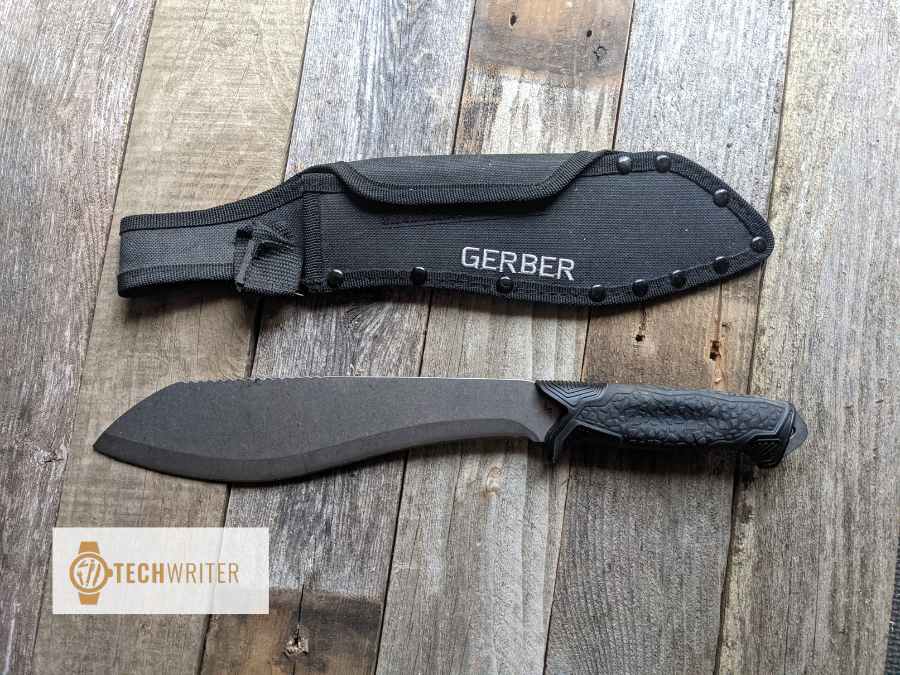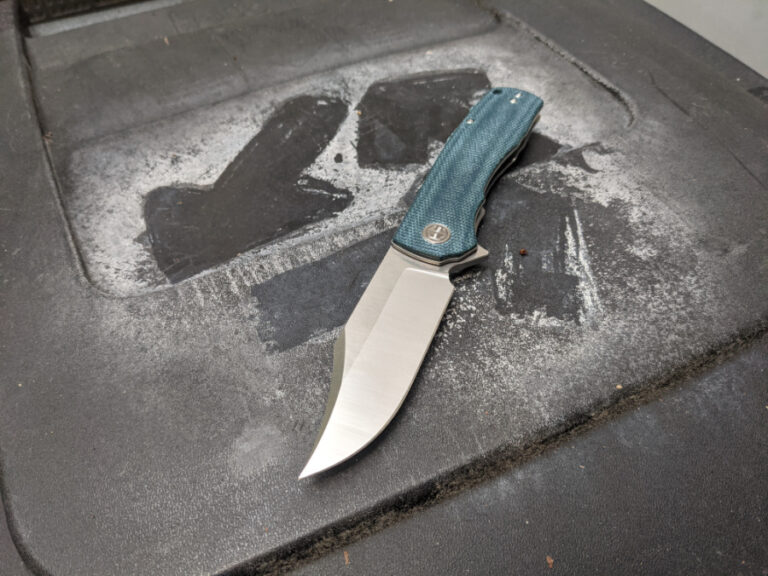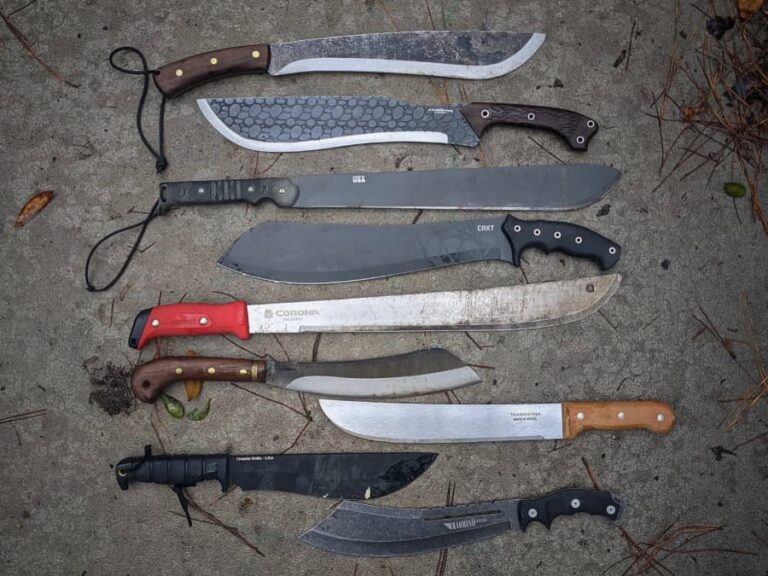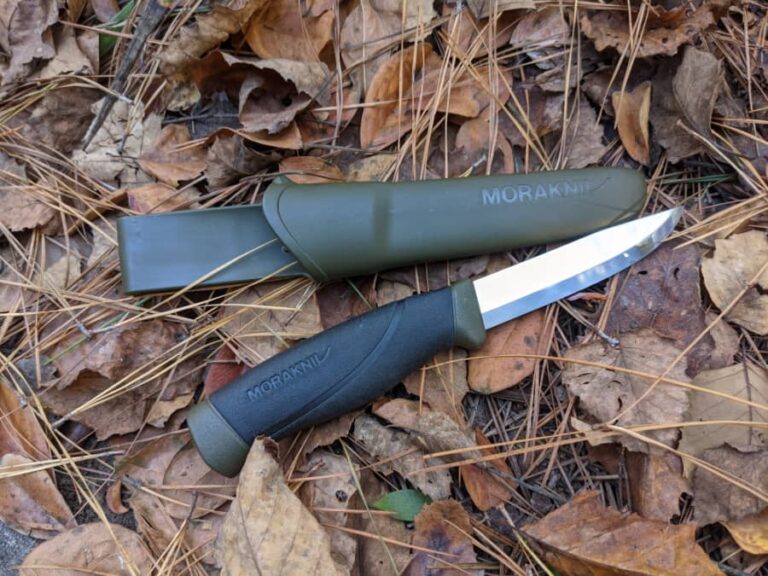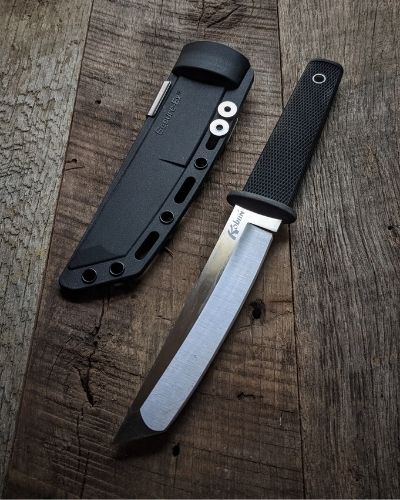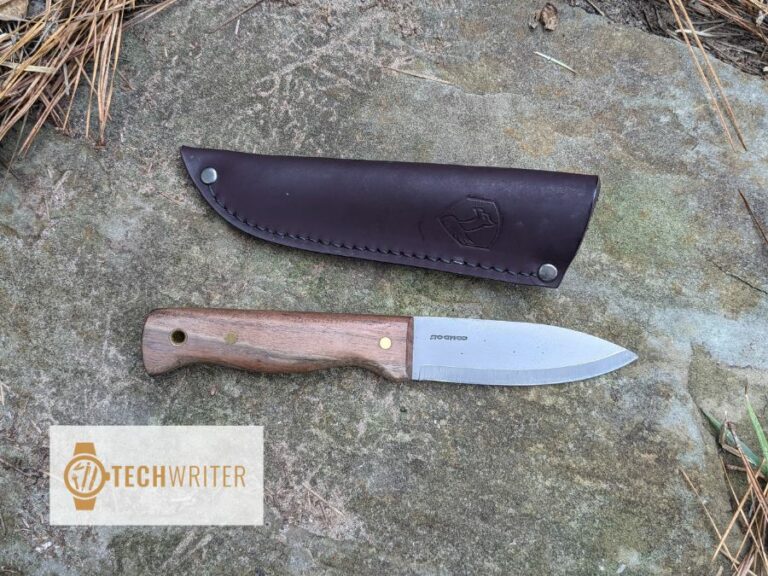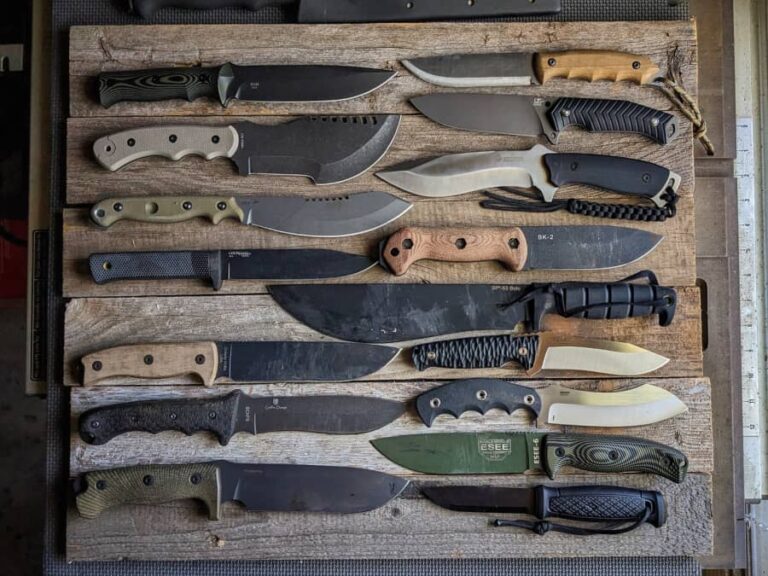Gerber Versafix Review
We’re here today with the Versafix hybrid knife/machete made by Gerber, a brand that I generally have mixed feelings about. I’ll be upfront and say Gerber has made some knives and tools I really like, and also some that I really don’t.
Even so, I’m not here to jump on the Gerber-bashing bandwagon. This is a company that a lot of self-appointed experts like to drag through the mud, and not without reason. They’ve made some questionable products (the utterly ridiculous Gerber Gator machete/saw hybrid springs to mind) but also some truly excellent knives. And lord knows I don’t love multi-tools, but when I do reach for one, it’s usually a Gerber.
With that in mind, I picked up a Gerber Versafix fixed blade/machete hybrid with the intention of reviewing it with no preconceived notions. And you know what? I kind of like it.
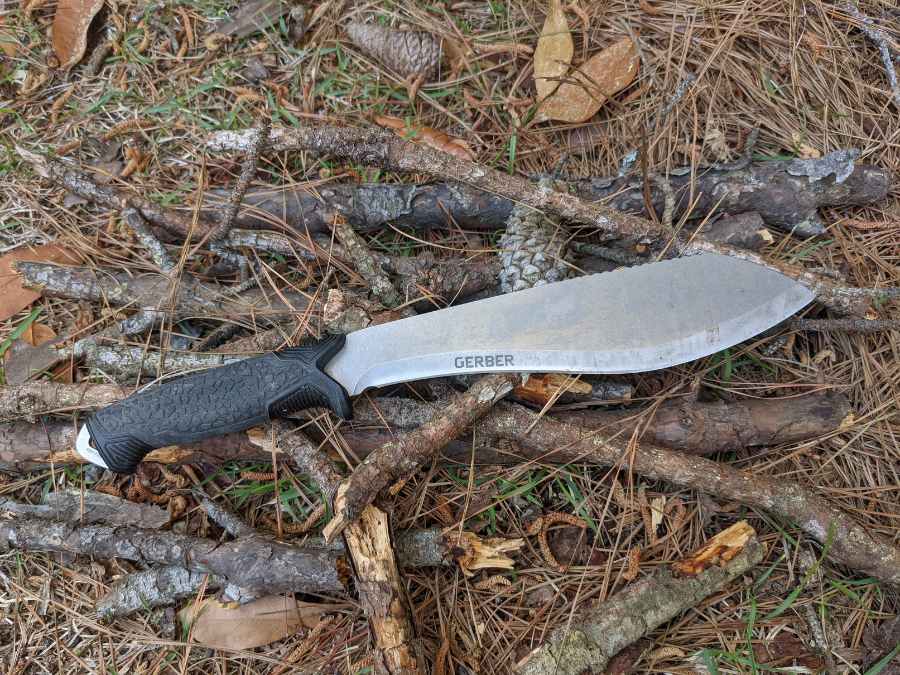
Gerber Versafix: First Impressions
The idea behind the Gerber Versafix is to provide the advantages of both a camp knife and a machete in one package. At a glance, I’d say they’ve succeeded. Bigger than your average bushcraft knife and smaller than your average machete, the Versafix threads that needle nicely.
It has a very grippy handle that feels comfortable in hand, and comes packaged with a pretty standard-issue Nylon sheath. I’ve been reviewing quite a few machetes and kukris recently, and one of the things that most surprises me about the Versafix is how lightweight it is, even when compared to similar-sized blades in the “mini-machete” arena.
The cutting edge is decently sharp out of the box, but not quite as sharp as I’d like it to be. After giving mine a once-over with a sharpener, we’re ready to start testing it out.
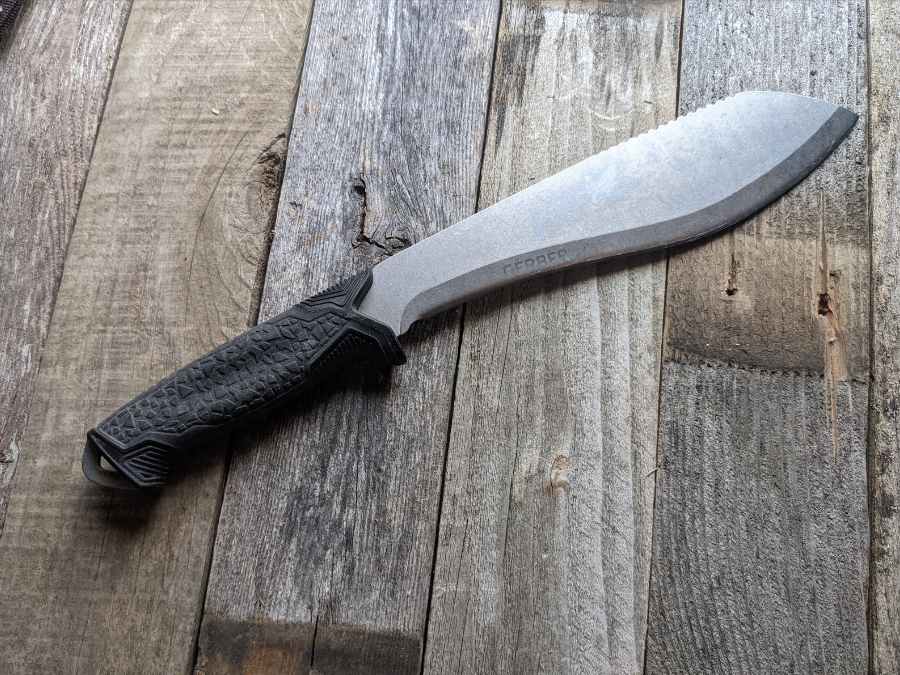
Measurements & Specs
Let’s get some of the boring details out of the way. The Gerber Versafix measures 14.3 inches in total length, and has a 9-inch blade (the actual cutting edge is 8.625″). It weighs 11.2 ounces. The full tang blade is 0.2” thick and made of an unspecified grade of stainless steel. The overmold handle is made of black, rubber-like material.
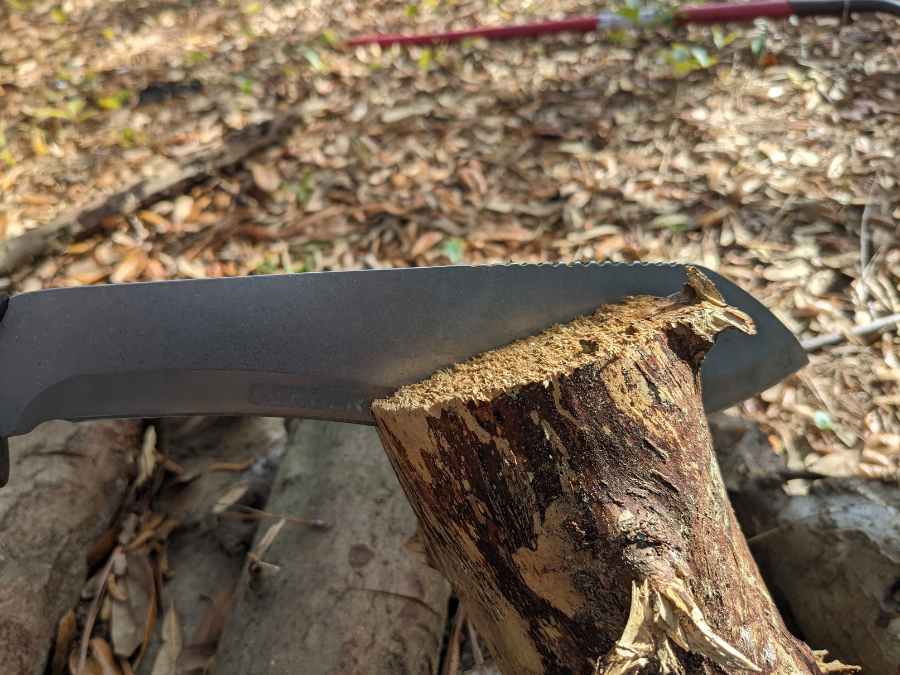
Blade Shape & Steel
I quite like the blade shape of the Gerber Versafix. It has a kukri-like recurve to it (though I wouldn’t call this a true kukri blade by any stretch of the imagination). That allows the forward “belly” of the blade to function as a chopping edge, while the inner curve closer to the grip works as a cutting/slicing edge.
The blade has a short flat grind, and the weight-forward nature of the design allows it to bite into wood very effectively. There’s some jimping on the spine, but rather than being located toward the rear of the blade, where jimping is traditionally placed to provide some thumb grippage, it’s closer to the forward end of the spine, apparently for the purpose of batoning.
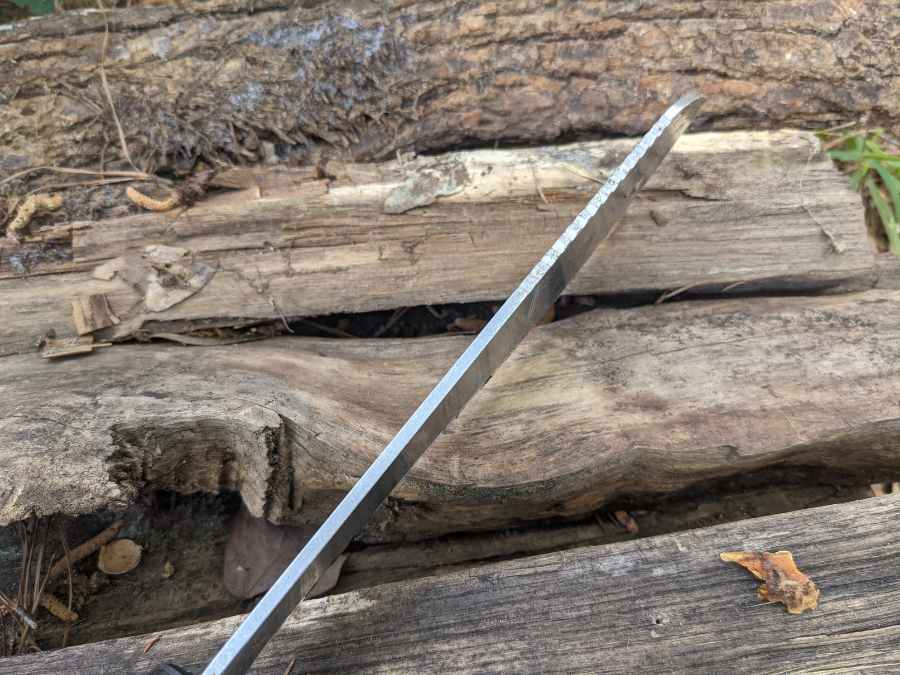
I can’t say for sure what kind of steel we’re looking at here. Gerber doesn’t say, and we can assume that if it was an impressive grade of steel, they’d advertise it as such. I’ve seen other reviewers state the steel to be either 2Cr13 or 3Cr13, which makes sense, but I don’t know where that information comes from or whether it’s accurate.
Either way, it’s stainless steel and clearly has good corrosion resistance, as well as toughness (i.e. resistance to breaking under stress or impact). Based on my own experience, it takes an edge nicely, but also dulls fairly quickly.
That being the case, I find either 2Cr13 or 3Cr13 steel to be believable. Both are cheap Chinese martensitic stainless steels, and the only real difference between the two is the amount of carbon present, which impacts hardness and tensile strength.
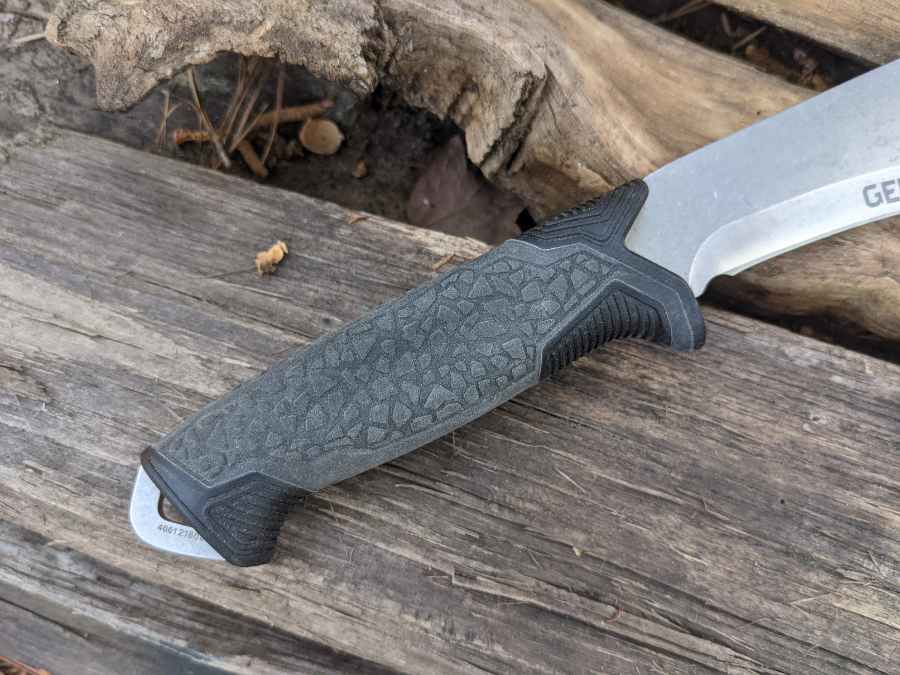
Handle & Sheath
The handle is one of the things I like best about the Gerber Versafix. I don’t know if it’s true rubber or a rubber-like plastic (probably the latter), but it locks onto my palm beautifully, and is super comfortable with no hot spots. The grip is nicely textured, including some jimping-like ridges where one’s thumb and index finger rest on the handle.
The sheath is perfectly adequate, but nothing to write home about. It’s your basic ballistic Nylon deal, with velcro flaps to hold the knife in place. It’s snug and secure on the blade. If you’re going for belt carry, it’s a little annoying that the only way to put it on or take it off is to remove your whole belt.
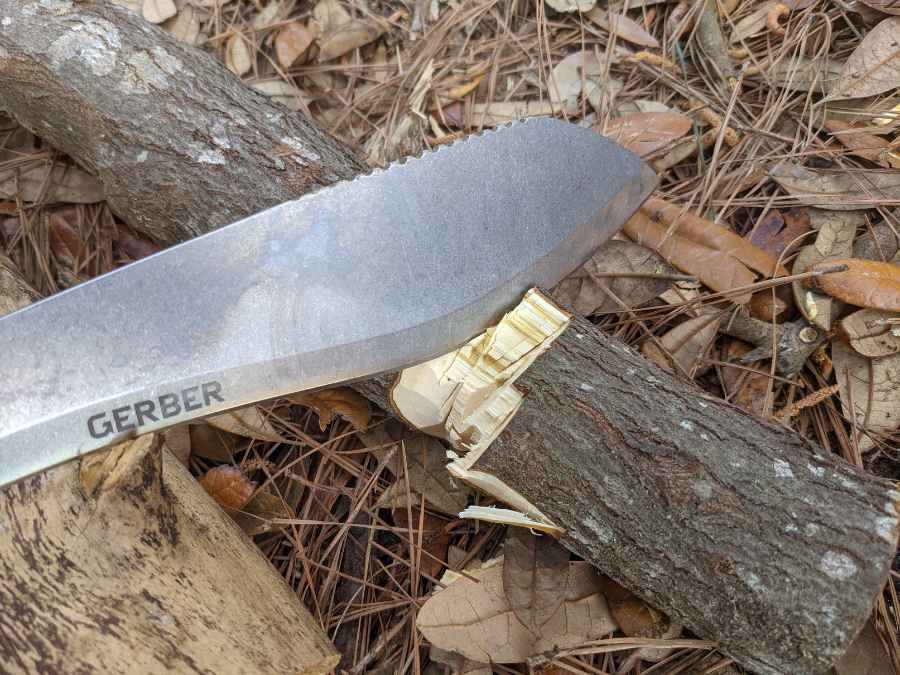
Testing & Performance
“Versatility” is right there in the name of the Gerbet Versafix, so a big part of testing out this blade is determining whether it can truly excel at as wide a range of uses as one would hope. Can it, as advertised, chop like a machete, cut like a knife, and split like an axe?
Ultimately, it strikes a very good balance. The Versafix handles batoning quite well, though if you’re working with harder woods, the max diameter you’ll want to attempt it on is probably 3 or 4 inches. With softer stuff like seasoned pine firewood you can split bigger pieces. I don’t know if the jimping on the spine really helps with batoning in any meaningful way, but the blade does a good job.
It’s a mean little chopper too. It wouldn’t be my first choice for taking down a full-sized tree, but I used mine to break down my old Christmas tree from last season, and the weight-forward chopping end of the blade made good, deep cuts every time.
For finer, detail-oriented tasks like slicing up materials and shaving tinder, the inner recurve section of the blade works nicely. After sharpening up the blade a bit, it’s quite adept at making feather sticks, gliding through the wood to create perfect little curls.
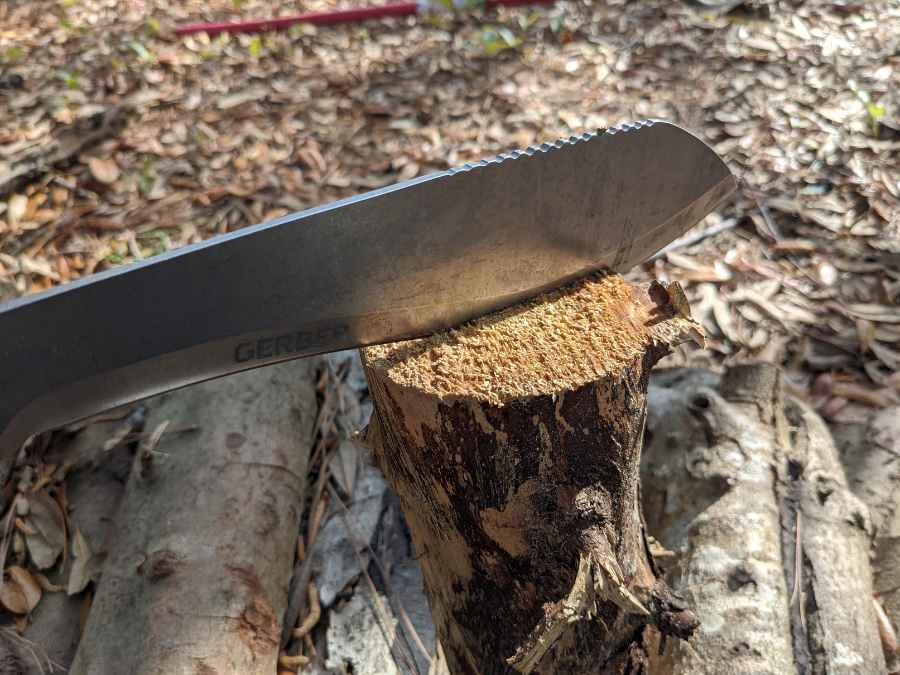
Final Thoughts on the Gerber Versafix
The real question, if you’re trying to decide whether this is a good blade for you, is what kind of person are you? I’m not trying to provoke an existential crisis, but ask yourself: are you the type who likes to have the exact right tool for each job? Or would you rather have a jack-of-all-trades-master-of-none blade that can do a pretty good job at a wide range of tasks?
If you’re the latter, then the Gerber Versafix might be for you. I will say that it’s a fairly light-duty version of a knife/machete hybrid. There are other blades in this in-between space that are a little more rough-and-tumble, and can handle chopping and splitting larger and tougher pieces of wood. The Kershaw Camp 10 camp knife comes to mind.
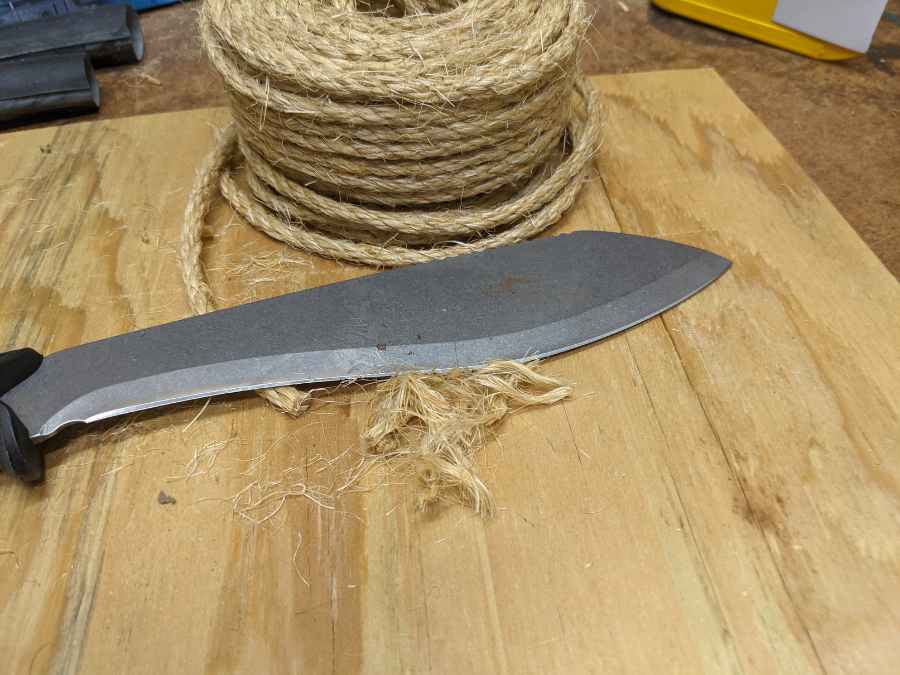
Another big consideration here is cost. At the time of publication, the Gerber Versafix is marked down to $27.81 on Amazon, and it’s a steal at that price. I say if you can get one of these on sale, go for it. But at the regular price—usually around $45—I’m less convinced that the Versafix is a bargain.
There are simply better options in the over-$40 price range. At that point, I would personally choose to scrape up an extra $10 and spring for the Kershaw Camp 10, which I happen to like better.
One significant advantage that the Gerber Versafix has over the Kershaw is that it’s lighter (quite a bit lighter, actually), so if you’re looking for a knife/machete hybrid that you can take hiking and not be weighed down by it, then I’d have to say that the Gerber is the way to go.

Blair Witkowski is an avid watch nut, loves pocket knives and flashlights, and when he is not trying to be a good dad to his nine kids, you will find him running or posting pics on Instagram. Besides writing articles for Tech Writer EDC he is also the founder of Lowcountry Style & Living. In addition to writing, he is focused on improving his client’s websites for his other passion, Search Engine Optimization. His wife Jennifer and he live in coastal South Carolina.

